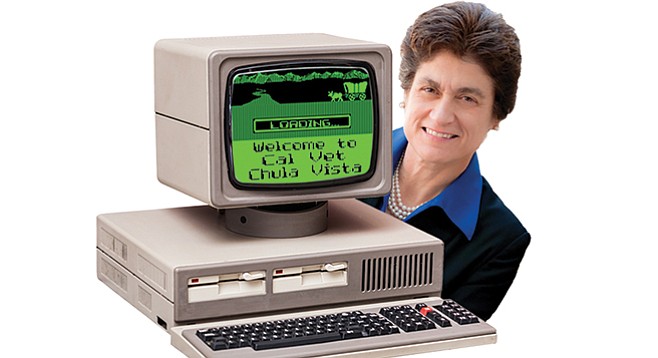 Facebook
Facebook
 X
X
 Instagram
Instagram
 TikTok
TikTok
 Youtube
Youtube

In July 2013, a new computer system was installed at the State of California’s veterans home in Chula Vista, and things quickly went awry. After repeated complaints from clinic staffers, the chief medical officer ran time trials for sample chores.
“The results revealed that these tasks required approximately twice as much time on average after the system was implemented,” says a June 16 report by state auditor Elaine Howle. “For example, a registered nurse determined that it took 105 minutes to conduct a new resident’s initial assessment using the system, compared to the 30 minutes for the same task before the system was implemented. In another example, a pharmacist found that it took seven minutes to process a medication order using the new system, a task that required 3.5 minutes before the system was implemented.”
Other complaints included a troublesome drug dispensation module. “Some orders were not processed and fell into an error queue without notifying staff that the order had not been processed.”
By June of last year, total costs for the automation project, which serves California’s eight veterans’ homes, had soared to $27.9 million. State bigwigs have now decided to junk the entire faulty setup and start over again, cost yet to be determined.
“Although [the California Department of Veterans Affairs] is now in the process of identifying a replacement system, it plans to continue to use the current system as best it can until it replaces the system,” notes Howle’s audit. Responded the veterans’ agency: “In retrospect, we could have moved more quickly or acted with greater urgency.”


In July 2013, a new computer system was installed at the State of California’s veterans home in Chula Vista, and things quickly went awry. After repeated complaints from clinic staffers, the chief medical officer ran time trials for sample chores.
“The results revealed that these tasks required approximately twice as much time on average after the system was implemented,” says a June 16 report by state auditor Elaine Howle. “For example, a registered nurse determined that it took 105 minutes to conduct a new resident’s initial assessment using the system, compared to the 30 minutes for the same task before the system was implemented. In another example, a pharmacist found that it took seven minutes to process a medication order using the new system, a task that required 3.5 minutes before the system was implemented.”
Other complaints included a troublesome drug dispensation module. “Some orders were not processed and fell into an error queue without notifying staff that the order had not been processed.”
By June of last year, total costs for the automation project, which serves California’s eight veterans’ homes, had soared to $27.9 million. State bigwigs have now decided to junk the entire faulty setup and start over again, cost yet to be determined.
“Although [the California Department of Veterans Affairs] is now in the process of identifying a replacement system, it plans to continue to use the current system as best it can until it replaces the system,” notes Howle’s audit. Responded the veterans’ agency: “In retrospect, we could have moved more quickly or acted with greater urgency.”
Comments